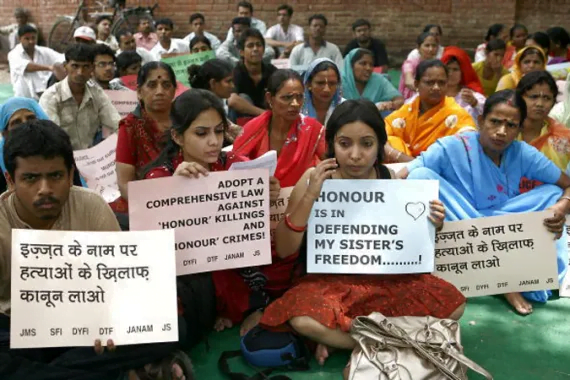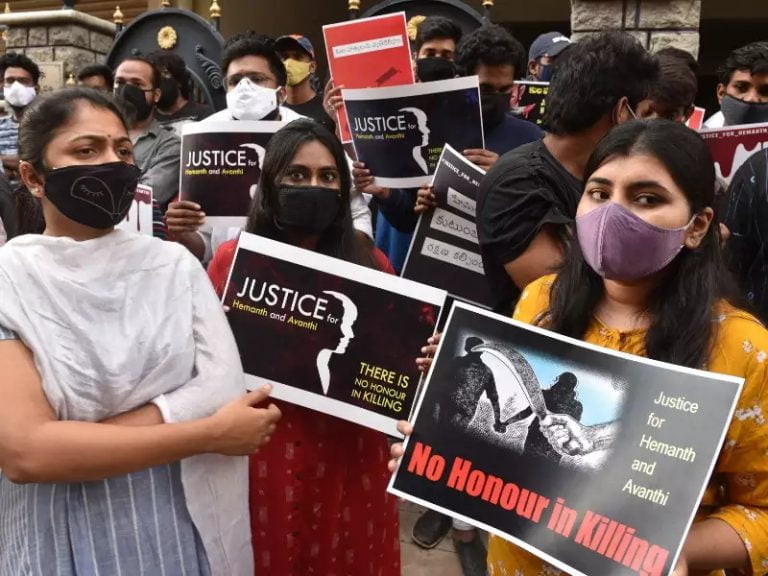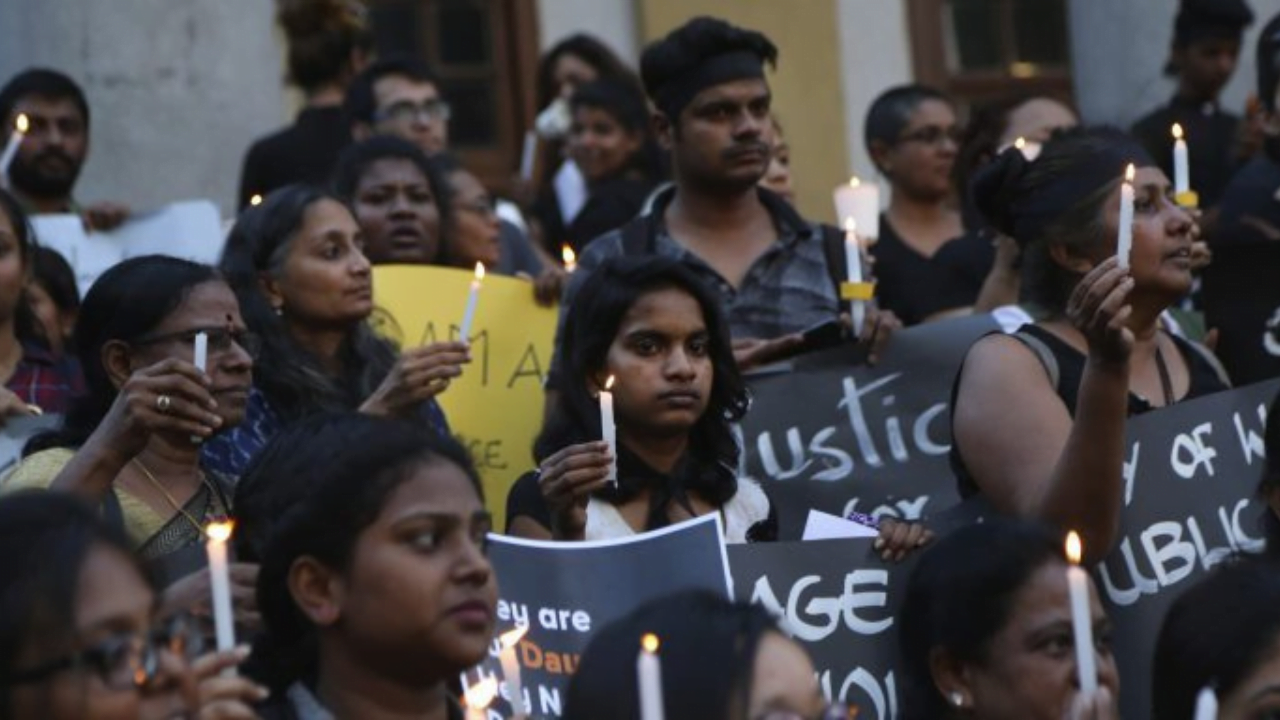“Honour killing is defined as killing for honour, a death that is awarded to the women or men by their own family members for marrying against their wishes or having a premarital relationship, marrying within the same gotra or marrying outside their caste.”
When one runs the idea of being killed by one’s own family, the thought seems ridiculous. Out of the question. Yet, when it comes to caste in India, there are matters which seem like they are essential towards maintaining the relations that have been present for hundreds of years. Without it, who would they be? As is evident, it is a matter of life and death.
Currently, the act of honour killings comes under the jurisdiction of the Indian Penal Code (IPC) and the Code of Criminal Procedures (CCP) which consist of crimes such as murders, injuries and kidnappings. When the victim belongs to a Scheduled Caste or Scheduled Tribe Community the SC/ST Prevention of Atrocities Act is applicable. Yet, when victims belong to the OBC or nomadic tribes, the only provision is the IPC.

On a whole, honour killings are registered as homicide, when in reality the intent behind the crime is much deeper than that. As a result, the crime of honour killings is lost in the flux of cases coming in without any preventative measures or remedies. This makes it difficult to obtain an accurate estimation of the number, nature and causes of the crimes.
When there is a crime as prominent and recurring as this one, there needs to be a law specifically addressing the issue and targeting the causes behind it. If there was a law, the crimes would be reported under it enabling the National Crime Record Bureau (NCRB) to collect accurate data.
Also Read: ‘Honour’ Killings Are Nothing But Murders To Exert Power
The crime of honour killing is already in violation of several laws. In 1947, a nascent, growing India chose to abolish untouchability and various caste-related evils in their Constitution. Yet, here we stand today, in 2023, with these evils, still widely prevalent amongst various communities. The Right to Life and the Right to Freedom is covered in Articles 19 and 22 in the Indian Constitution, as Fundamental Rights. These rights are essential to basic democracy and promise a life of dignity to all, which is everything that the structure of the caste system works against, resulting in acts of caste-based violence.
The Special Marriage Act (1857) was made with the purpose of adhering to the secular characteristics of Indian democracy. It was made to protect and legalise interreligious as well as inter-caste marriages which were initially unconventional in society. Yet, the issue of caste is too deeply ingrained into the blood of the people, as they desperately cling to the identity that it gives them.

“These so-called ‘honour killings’ often pop up in the news — couples charred to death, women found with their throats slashed ear to ear, police looking the other way in deference to village kangaroo courts.”, writes Tanushree Pandey In The Print.
The Dalit Human Rights Defenders Network (DHRHNet) along with the National Council for Women Leaders (NCWL) recently published a report regarding the details of the caste-based honour killings from the seven states of Haryana, Gujarat, Bihar, Rajasthan, Tamil Nadu, Maharashtra and Uttar Pradesh.
“A Khap panchayat is the union of a few villages, mainly in north India though it exists in similar forms in the rest of the country. Lately, they have emerged as quasi-judicial bodies that pronounce harsh punishments based on age-old customs and traditions, often bordering on regressive measures to modern problems.”
The Supreme Court has acknowledged the threat that these panchayats pose to different communities. Their propagation of traditional customs, culture and social standards often goes against the concepts of life and liberty. They take it upon themselves to punish individuals who go against what they believe is right, when the truth is, they have no power whatsoever to lead this dictatorial regime amongst the masses.
Also Read: Does The Sharon-Greeshma Murder Case Reveal Serious Deep-Rooted Social Issues?
Marriage is a decision the panchayats take under their jurisdiction. They believe they must provide certain limitations in the institution of marriage to follow the etiquette of caste-based relations. Anything against this will bring shame, humiliation and dishonour to the community.

Aravind Adiga seamlessly illustrates the entity of caste today, in his best-selling novel, ‘The White Tiger,’ “In the old days there were one thousand castes and destinies in India. These days, there are just two castes: Men with Big Bellies, and Men with Small Bellies. And only two destinies: eat- or get eaten up.”
People are desperate to clamour to the top of the food chain. Even if this means pushing others’ way down below. The root cause of the issue lies in the age-old caste-based structure of Indian society. Marrying ‘up‘ or ‘down‘ causes a change in the social status of the family. If someone from a higher caste were to marry another from a lower class, they would be voluntarily tainting not only their own image but their family image. Who in their right mind would do that? Out of love? Impossible.
When one’s identity; social standing, occupation and income, are majorly dependent on caste, this can cause them to believe that it topples their entire sense of being. Therefore, the only way to keep this identity is to rid their family of this relationship which acts as a dirty stain on their family name.

In a country such as India, caste-based issues can be very complex and delicate to deal with while framing laws due to the social stigma around most of the problems themselves, rampant poverty and an illiterate population which is currently being policed by mainly upper caste, Brahmin Hindu men.
Also Read: How Is Sexual Violence Normalised In India?
While an improvement in the legal framework surrounding these issues is a must, what is more urgently needed is a change in the mentality and approach towards caste in the country. This responsibility lies with the government itself. Only with the improvement of literacy rates, education and anti-divisiveness among communities can true progress be made in the battle against the prevailing caste system.





